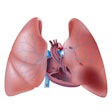Dear CT Insider,
Radiology is barreling toward a tsunami of dose and protocol management rules -- about which most radiologists have only the vaguest notion. But ignorance will not be bliss on July 1, according to a presentation at last week's International Symposium on Multidetector-Row CT (MDCT 2015) in San Francisco.
The Joint Commission's new accreditation standards go into effect in less than two weeks, and they present a myriad of new requirements for radiologists reading CT studies. These include reviewing and analyzing protocols, dealing with exams that come in on the high side of expected dose, ensuring that technologists are trained every year on the equipment they are actually using -- and much more.
The requirements have been finalized for months, so this is no wake-up call. Or is it? For the results of a readiness survey of more than 100 providers across the U.S., check out our Insider Exclusive.
Also from MDCT 2015 comes evidence that the heart is a critical component of lung cancer screening with CT. Or at least it should be, considering that radiologists already have everything they need to check it with their low-dose nongated thoracic CT scans. Click here for an eye-opening discussion from the Netherlands.
Speaking of cardiac risk assessment, the U.S. Preventive Services Task Force appears to be on the cusp of determining -- finally -- that heart disease risk models such as Framingham and even the Pooled Cohort Equations calculator aren't enough to assess cardiovascular risk. You need CT -- and something else. What may be poised to become standard risk-assessment measures? Do you have something to say about the decision? Find out all about it here.
Will it be CT or myocardial perfusion SPECT to look for coronary heart disease? The comparison is close, maybe even a little unfair, but one test gets the edge, according to a new study from New York City.
Up in Canada, it turns out that the farthest regions of the Arctic are no longer too remote for a CT scanner and satellite link, which is changing healthcare in the region dramatically. Sure it was expensive, but it's far cheaper than all the airfare to Ottawa. Click here for the rest of the story.
Do you read images on your PACS without hanging protocols, or with terrible software that limits their utility? If so, you're wasting your time and everyone else's, according to another report from MDCT 2015. Dr. Jeffrey Mendel offers tips and tricks for streamlining your reading workday and emphasizing your strengths.
Or maybe you have a big collection of scanners from multiple vendors and sites that are giving you headaches in terms of dose and image quality standardization. Well hurt no more, because the Mayo Clinic had the same problem and solved it in three steps.
Talk about commoditization! Does radiology really need to follow the Uber model to survive? Find out here.
From San Francisco comes word that CT colonography may finally be about to achieve reimbursement as a colorectal cancer screening test. Yes, we know, you've heard this story before. But word on the street is that the stars may finally be aligned for a breakthrough.
Last but not least, new research reveals that adding contrast media doubles the DNA damage from a CT exam. And to think you were only worried about contrast reactions and maybe the occasional scourge of extravasation. Learn exactly what the research shows by clicking here.
These are challenging times for CT providers. But we hope a daily dose of AuntMinnie.com's CT Community will be a protocol you'll hang with.



















